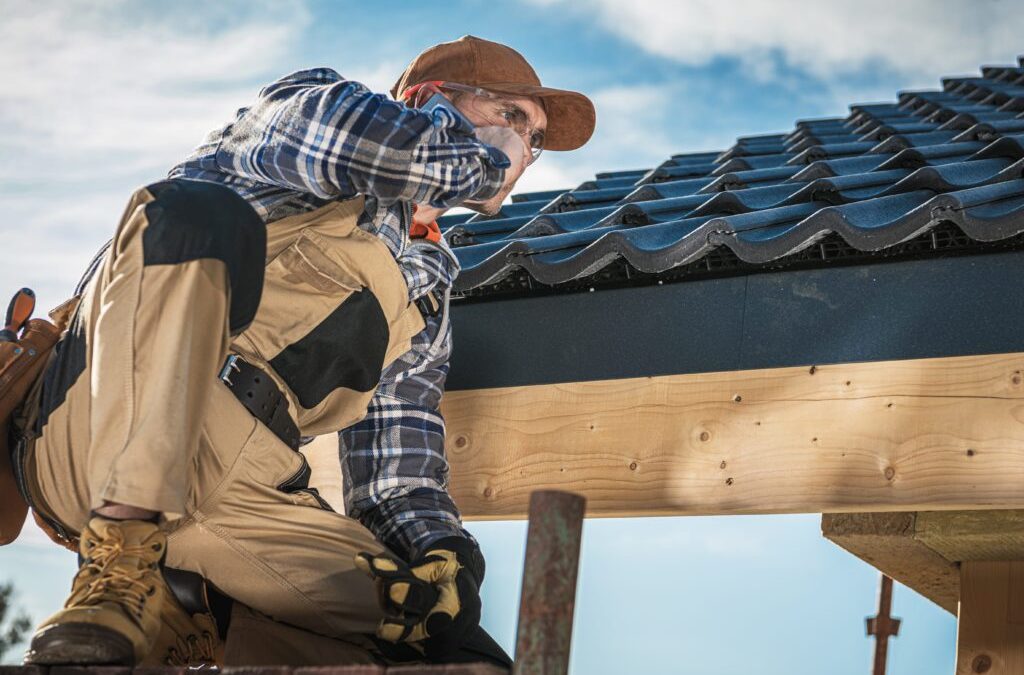There is a recent interest in synthetic roofs in Jacksonville. Many Jacksonville roofers and individuals in the North Florida roofing industry have been looking into the new trend. A synthetic roof, also known as a composite roof, is a roof made up of many compressed materials in the form of tiles or shingles. The tiles or shingles, depending on the manufacturer, are made up of different materials that are mixed and compressed. Many manufacturers use rubbers and polymers to create their shingles, while others used recycled products.
There are a multitude of positives when it comes to using some of these types of materials, but synthetic roofs are still relatively new and therefore there are a lot of questions. Many in the industry question the true durability when it comes to some of the materials used.
Why Invest In a Synthetic Roof
The main reason people invest in synthetic roofs is to be more green. Organizations like Green American encourage individuals to build green homes. “By implementing green features and using renewable or recycled and salvaged materials, home and building owners can greatly reduce a building’s impact on the environment and the climate,” Green America said. Many manufactures use recycled materials in their synthetic blend.
The National Park Service supports the use of recycled materials in their article, Recycle Plastic and Rubber Roofing Shingles. The government agency explains that trash, “like used vehicle tires and even plastic milk bottles, are cut, heated and molded into shingles.”
It claims the materials are strong and are tested to withstand time, weather and more. While the National Park Service does not know the full environmental impacts of reusing these materials yet, it does say that “repurposing an existing product that can be recycled again follows the basics of cradle-to-cradle principles.”

It also explains that these recycled materials do have a “lower carbon footprint than tradition roofing shingles.” Its reasoning is because manufacturing this synthetic blend doesn’t “require the inputs and landfilling associated with asphalt or the mining associated with slate,” the National Park Service said.
It is important to note the National Park Service does recognize that this type of synthetic blend is new and “manufacturers have not proved claims of longevity.”
Many claim synthetic roofs are also a less expensive alternative to slate and other high-quality roofing materials. RoofCalc.org said in their article on the 5 Best Synthetic Slate Roofing Products that composite roofs “cost at least 50-60% less.” RoofCalc.org says that composite slate roofs are considered to be “lighter in weight, highly durable, and weather resistant, making them a premium, high-quality roofing material.”
In addition to many synthetic products being made up of recycled materials or are recyclable, lighter, durable and cheaper, synthetic products are also considered easier to install.
Concerns Over Synthetic Roofs
Bob Villa, a famous home guide, spoke with the editorial director of Roofing Contractor magazine in his article on composite roof shingles. He quoted the director saying that synthetic manufacturers used some fibers in their synthetic blends that “just didn’t perform as well.” The point is that not every synthetic roofing material is created equal. Some are not as durable or long-lasting as others.
Villa’s article also debates the price of synthetic roofing. While, as noted above, many companies show synthetic roofing is potentially 50% less expensive, Bobvilla’s article explains that while the material is maybe less expensive than luxurious roofing materials, it’s still more expensive than many standard roofing materials.
Also, it takes a “certified installer” to install a synthetic roof, and finding a certified professional can be difficult, according to Villa’s article.
DaVinici is a manufacturer that specializes in composite roofing. The company, along with many others, feels that the “variability found in recycled materials could compromise the long term viability of a roof,” according to their website.
DaVinici uses virgin resin (plastic) to make their blend, and while the material is 100% recyclable, this takes some of the “green” opportunities out of the equation. More consistent synthetic blends are considered more reliable, but these blends don’t use recycled goods. Your Roof And Your Homeowner’s Insurance: 5 Things You Need To Know
Overall, The Experts Say…
Many experts are on board and feel that the testing that has been done so far on synthetic roofs shows that these roofs are durable and a good alternative. Other experts don’t feel there is enough evidence to back up that the different fibers within synthetic blends don’t compromise the integrity of the roof.
HGTV supports the use of synthetic roofs in their article The Benefits of Synthetic Slate Shingles. HGTV says that synthetic roofs “are a modern improvement on a construction classic.” In the article, HGTV feels synthetic slate shingles are a good alternative because they look elegant and they “last longer.”
“Made from combinations of plastic and rubber, synthetic slate is designed to mirror the beauty and uniqueness of authentic slate without the expense or installation headaches,” HGTV said.
The biggest concern within the industry is that durability isn’t proven yet because these products are so new.
Cindy Paquet, owner of Cache Roofing in Jacksonville, says that while these materials seem less expensive, in reality, it ends up being not as inexpensive as people expect. Her thought to anyone considering is for individuals to think about whether it is worth the money for the option to be more green.



Recent Comments